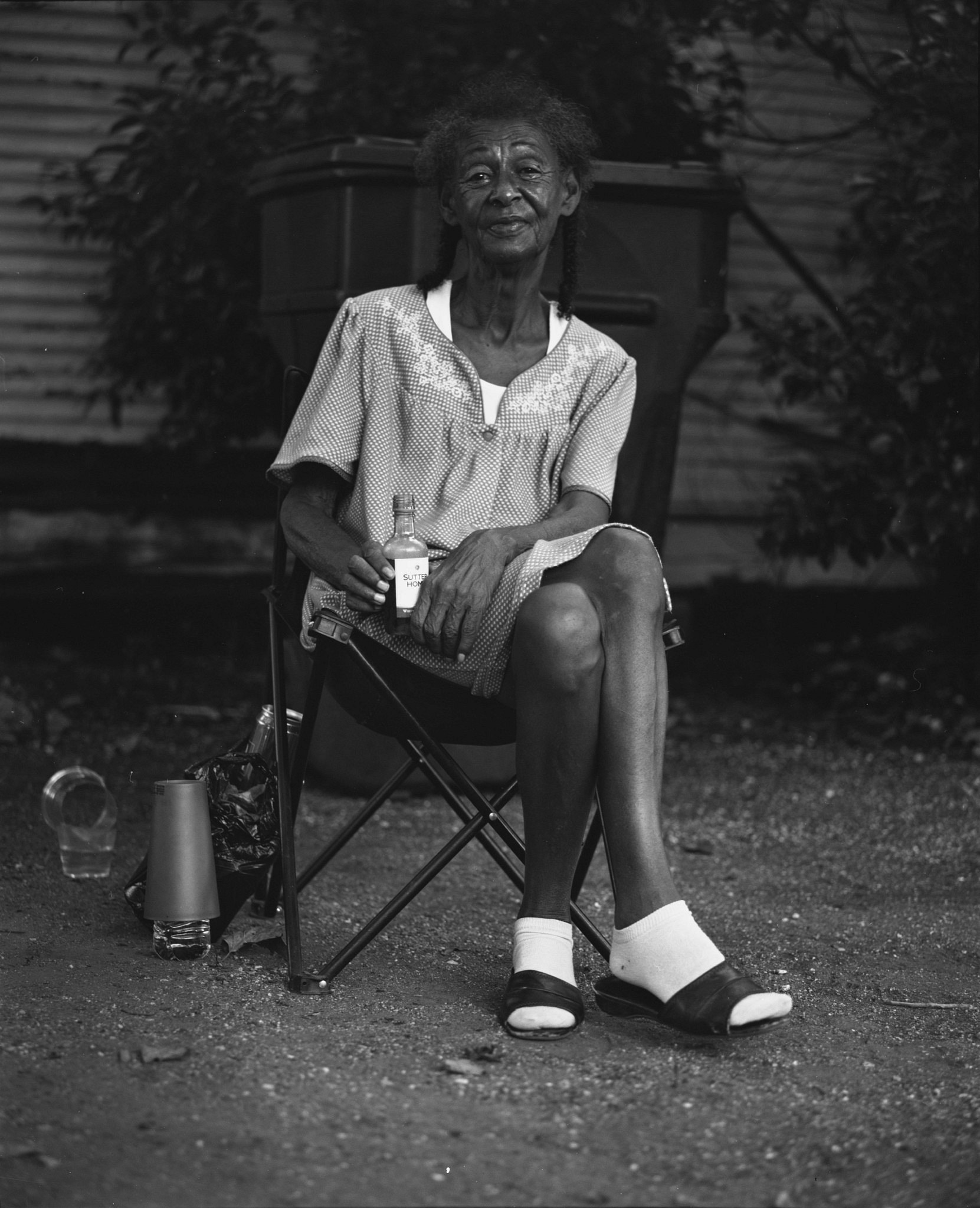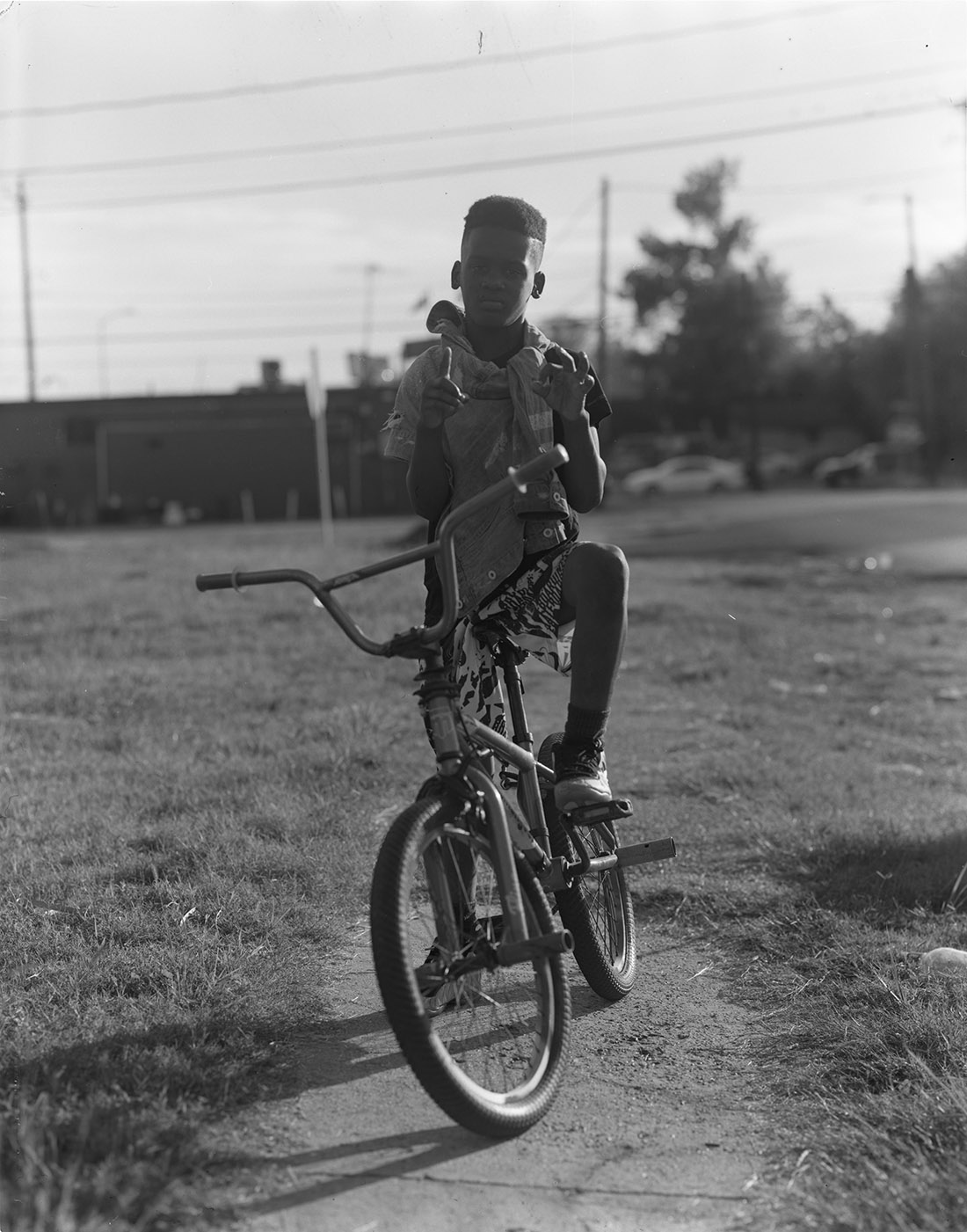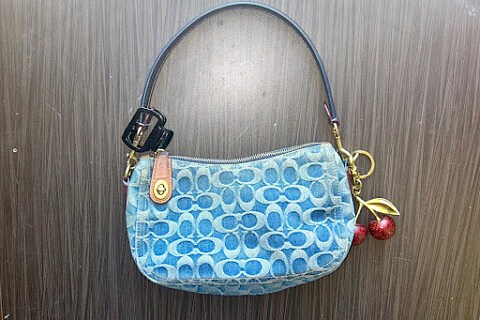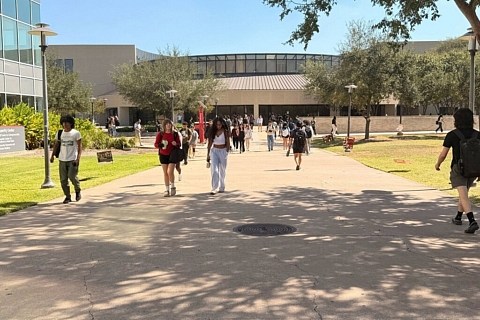In a line of white houses down Holman Street, you will find Project Row Houses, a place that is enriching the lives of the Third Ward community through art.
But in an area like the Third Ward that is struggling under the grip of gentrification, PRH can’t just be like other art installations, and for the artists who have and are inhabiting this space, it’s definitely not.
“Often times, art galleries and stuff like that are a part of gentrification,” said Colby Deal, a UH alumnus who did an installation last August. “But Project Row Houses uses its resources, power and the platform its created to give back to this community.”
Deal said that working with PRH is an experience unlike any other, that it aligns with the things he values the most — home and family — and creates a sense of that for its artists and visitors alike.
The main row of PRH is comprised of shotgun style homes that were restored in the late ‘90s, and are now used as art studios for the artists selected to work on them during a six-week timeframe.
For many, this place actually is their home. In the row behind these art studios, there are a few houses that are occupied by low-income single mothers. They live at the site of PRH, while simultaneously working, going to school and trying to raise their families as part of PRH’s Young Mothers Residential Program.
In addition to what they do on the site of their development, PRH also serves as an advocate for the Third Ward community.
When the controversial $33.6 million renovations were made to Emancipation Park last year, PRH got together with local businesses, organizations and residents to create the Emancipation Economic Development Council, which focuses on revitalizing the economy of the Third Ward without erasing its identity, instead focusing on preserving its history and culture.
Empowering the community
Preservation and empowerment is something that all of the artists who come to work at PRH are passionate about, actively trying to make art that not only aligns with them, but also aligns with the community around them, whether this is a space they are familiar with or not.
For UHD student Charli Sol, who is currently working on their art installation, this meant going to local businesses, community centers, parks, coffee shops and churches to respectively engage in a conversation with the members of this community.
“I’ve challenged myself to be very open and vulnerable and honest, and I’ve noticed that when I exude that honesty, people are receptive, and people are given permission to be honest back,” Sol said.

Sol invited prominent members of the Third Ward community to come into their space to paint portraits of them for their exhibit. | Photo by Julie Araica/Cooglife
Sol considers themselves a healer, and being a healer manifested itself when they were coming up with their proposal. Sol invites members of the community to come into their studio where they paint portraits of them, including lush and vibrant plant life in the paintings. The space around them is decorated with dying, decaying plants, which Sol says are no less beautiful. A metaphor that strongly resonates with the community members they choose to portray in their paintings.
“My intention for this work was to offer members of the Third Ward community, members with bodies similar to mine or different, members who are marginalized, members who aren’t valued by the society we find ourselves struggling in for different reasons at different times, I want all of these people to have a moment where I recognize that things are wrong and things are stressful and things are decaying but we can still find beauty in them,” Sol said. “We need to have hope and to stick together, and remember that our community is what’s going to help us through these issues.”
There exists a huge opportunity gap in the Third Ward community, an issue that Sol says PRH and other organizations work hard to fight against. But because of this opportunity gap, Sol said that a lot of members of this community begin to internally devalue themselves.
Because of this internalized devaluing Sol observed, it was extremely important to them to create work that was uplifting, this desire to uplift translated into everything from the sourcing of the plants they used to the very material of the artwork itself.
“Oil is a champion of the art world, and people put a lot of weight into it,” Sol said. “And in portraying these people on oil through this technique that I use with the flourishing plants I hope to help them feel valued and help others recognize the value in these people.”

Every part of Sol’s installation was carefully planned out, from the material used on the paintings to the sourcing of the plants. | Photo by Julie Araica/Cooglife
Like Sol, Deal also focused his installation, which he named “Beautiful, Still” on uplifting the people of the Third Ward and helping them see the beauty in themselves and the community around them.
“The basis of the project started with the social construct of how people of color are viewed in these urban, low-income areas. The media perpetuates such negative imagery, my project was based on combating that and showing the beautiful side of these people that you never get to see,” Deal said. “Majority of the people aren’t happy with themselves as people of color, and in these communities we’re not appreciated or we feel lower than the average person. I wanted to make these people feel good about themselves as they already are.”
Deal’s ties to the Third Ward are personal. His father grew up in this community, going to Yates High School and then Texas Southern University.
He served as a huge inspiration to Deal both for his installation, but also as an artist. His father was a photographer when he was younger, capturing the Third Ward that he grew up in at the time.
Deal, whose installation was completely based around photography, said that seeing these photos made him see the beauty that is and always has been within the community. That the Third Ward is beautiful, still.
Community changes
Seeing the Third Ward captured in photos through these two different perspectives and timelines has made Deal hyper-aware of many of the issues it faces.
“It’s really being infiltrated and become a product of erasure,” Deal said.

Deal aimed to capture the beauty of the Third Ward and its community in his installation “Beautiful, Still” through a series of photographs. | Photo courtesy of Colby Deal
Art senior Alexis Pye, who is also working on her art installation, may not have grown up in the Third Ward, but the issue of gentrification is something she knows all too well. Pye is from Detroit, and witnessed her city morph into something else entirely over the years.
“Every time I go home to Detroit, even though I love the coffee shops and I love the record stores, it’s like ‘oh there’s another high-rise and then there’s this company that’s been there for years and now it’s gone because they had to leave after the taxes became too high for them to stay,’” Pye said.
Pye said that through the process of gentrification, her own city makes her feel like a foreigner at times, even though it’s the place she grew up.
“This guy at the record store asked where I was from and I was like ‘dang I’ve been in the city since I was a little kid I know the people that you bought this place from,’” Pye said. “I mean, I’m happy that people have this pride in Detroit, but the thing is that these people from the ‘burbs are coming in and they’re like ‘this is our land,’ and that’s cool and all, just respect the culture that has been here.”
PRH is giving the people of the Third Ward a platform to speak on, and Pye believes that this is extremely important in combating the gentrification taking place by raising awareness.
Changing lives
Although making others aware of what’s going on may not seem like a lot, for many, simply listening to what members of the community are going through and giving them a voice to express those thoughts and feelings can make a world of difference.
Pye’s installation focuses on art and music within the Houston and Third Ward community, creating art out of old records, and highlighting places like El Dorado Ballroom and historically significant things in Houston music, like Peacock Records.
She also spoke with community members, and has their interviews playing on loop throughout her house. Her house is unique in having multiple rooms, and she used this to create the audio effect of listening to a conversation from another room.
Pye’s interviews centered around music and what life is like for people in the Third Ward through their own words. Giving these people a platform had a profound impact on many members of the community.
“I almost got into tears because this one guy got into tears from talking to me and I was like ‘it’s fine I really wanted to talk to you,’ but he was just like, ‘people don’t really ask about this stuff, people really want to talk about other things, not the things that come out of the Third Ward.’”
For Deal, his photographs have also made an impact. A woman he photographed for his exhibition named Shirley cried in joy after seeing the photo he took of her on display at the installation. A photo that helped her recognize a beauty she didn’t know she had.
Deal also recalled an encounter he had with a young boy named Christian, who was out riding his bike one day while Deal was taking photographs for his installation. He stopped Deal, wanting to get a closer look at his camera. He let Deal photograph him, and Deal let him take a few pictures himself.
“I don’t think he had ever held a camera like that before. But after he was able to press down on that button, I think it opened up this whole new world for him. He realized that this art was accessible to him too. I gave him the opportunity to realize something like that, and he told me that he wanted to be a photographer too when he grew up,” Deal said. “Moments like that remind me of what I’m here for. I want to show these people, these kids, that a life exists beyond what they know, and that art is for people like us too.”

A photographer of Christian, a boy that Deal photographed as a part of his “Beautiful, Still” installation. | Photo courtesy of Colby Deal




Recent Comments